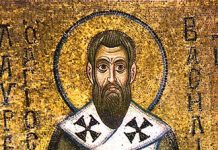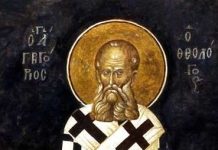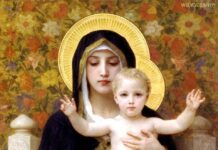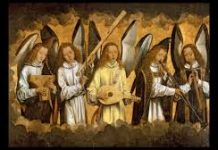BENEDICT XVI
GENERAL AUDIENCE
Paul VI Audience Hall
Wednesday, 10 March 2010
Vatican Basilica
To participants in the Pilgrimage of the Don Carlo Gnocchi Foundation
Dear Brothers and Sisters,
I am glad to receive you in this Basilica and to address my cordial welcome to each one of you. I greet the pilgrimage promoted by the Don Carlo Gnocchi Foundation after the recent beatification of this luminous figure of the Milanese clergy. Dear friends, I am well aware of the extraordinary activity you carry out in the vast area of health-care assistance for children in difficulty, for the disabled, for the elderly and for the terminally ill. Through your projects of solidarity you strive to perpetuate the praiseworthy work begun by Bl. Carlo Gnocchi, an apostle of modern times and a genius of Christian charity, who, in taking up the challenges of his time, devoted himself with every possible care to little ones who were mutilated, victims of war in whom he discerned the Face of God. A dynamic and enthusiastic priest and a perceptive teacher, he lived the Gospel integrally in the different milieus in which he worked with unflagging zeal and indefatigable apostolic fervour. In this Year for Priests the Church once again looks to him as a model to imitate. May his shining example sustain the work of all who are dedicated to the service of the weakest. May it also inspire in priests the keen desire to rediscover and reinvigorate awareness of the extraordinary gift of Grace that the ordained ministry represents for those who have received it, for the whole Church and for the world.
Let us conclude this short Meeting by singing the prayer of the Pater Noster.
Saint Bonaventure (2)
Dear Brothers and Sisters,
Last week I spoke of the life and personality of St Bonaventure of Bagnoregio. This morning I would like to continue my presentation, reflecting on part of his literary opus and on his doctrine.
As I have already said, among St Bonaventure’s various merits was the ability to interpret authentically and faithfully St Francis of Assisi, whom he venerated and studied with deep love.
In a special way, in St Bonaventure’s day a trend among the Friars Minor known as the “Spirituals” held that St Francis had ushered in a totally new phase in history and that the “eternal Gospel”, of which Revelation speaks, had come to replace the New Testament. This group declared that the Church had now fulfilled her role in history. They said that she had been replaced by a charismatic community of free men guided from within by the Spirit, namely the “Spiritual Franciscans”. This group’s ideas were based on the writings of a Cistercian Abbot, Joachim of Fiore, who died in 1202. In his works he affirmed a Trinitarian rhythm in history. He considered the Old Testament as the age of the Fathers, followed by the time of the Son, the time of the Church. The third age was to be awaited, that of the Holy Spirit. The whole of history was thus interpreted as a history of progress: from the severity of the Old Testament to the relative freedom of the time of the Son, in the Church, to the full freedom of the Sons of God in the period of the Holy Spirit. This, finally, was also to be the period of peace among mankind, of the reconciliation of peoples and of religions. Joachim of Fiore had awakened the hope that the new age would stem from a new form of monasticism. Thus it is understandable that a group of Franciscans might have thought it recognized St Francis of Assisi as the initiator of the new epoch and his Order as the community of the new period the community of the Age of the Holy Spirit that left behind the hierarchical Church in order to begin the new Church of the Spirit, no longer linked to the old structures.
Hence they ran the risk of very seriously misunderstanding St Francis’ message, of his humble fidelity to the Gospel and to the Church. This error entailed an erroneous vision of Christianity as a whole.
St Bonaventure, who became Minister General of the Franciscan Order in 1257, had to confront grave tension in his Order precisely because of those who supported the above-mentioned trend of the “Franciscan Spirituals” who followed Joachim of Fiore. To respond to this group and to restore unity to the Order, St Bonaventure painstakingly studied the authentic writings of Joachim of Fiore, as well as those attributed to him and, bearing in mind the need to present the figure and message of his beloved St Francis correctly, he wanted to set down a correct view of the theology of history. St Bonaventure actually tackled the problem in his last work, a collection of conferences for the monks of the studium in Paris. He did not complete it and it has come down to us through the transcriptions of those who heard him. It is entitled Hexaëmeron, in other words an allegorical explanation of the six days of the Creation. The Fathers of the Church considered the six or seven days of the Creation narrative as a prophecy of the history of the world, of humanity. For them, the seven days represented seven periods of history, later also interpreted as seven millennia. With Christ we should have entered the last, that is, the sixth period of history that was to be followed by the great sabbath of God. St Bonaventure hypothesizes this historical interpretation of the account of the days of the Creation, but in a very free and innovative way. To his mind two phenomena of his time required a new interpretation of the course of history.
(To continue reading, please see here).










